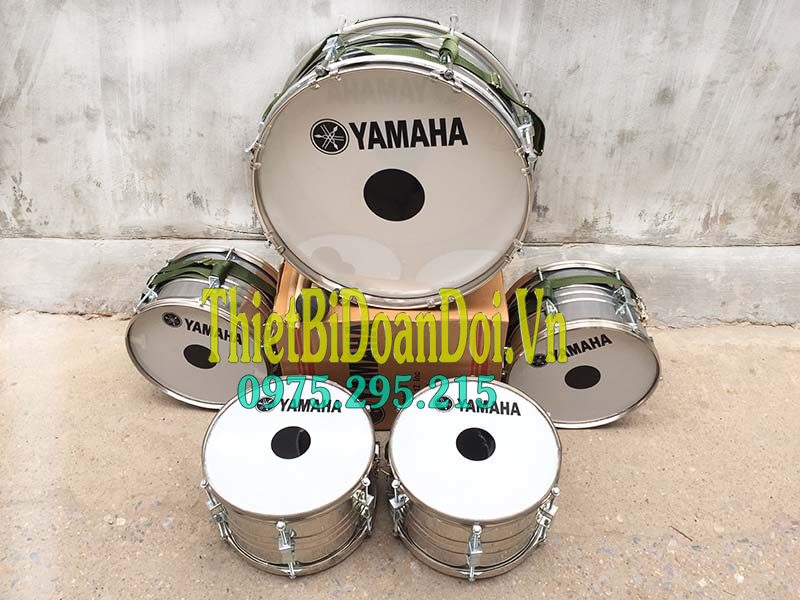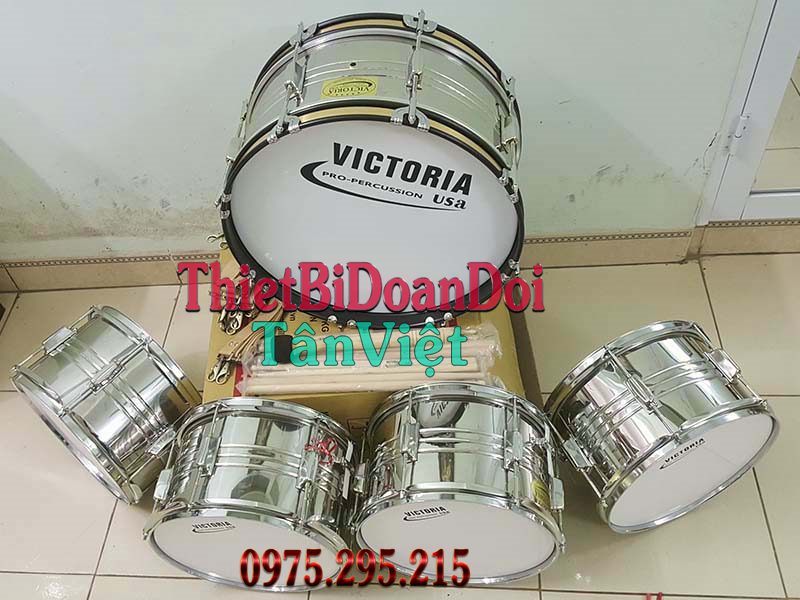Thi nghi thức đội hoặc các hoạt động đoàn đội thường xuyên diễn ra không chỉ trong nhà trường, do đó việc học đánh các bài trống đội đã được đưa vào giáo dục trong nhà trường. Với 1 bộ trống đội Tân VIệt các bạn nhỏ sẽ có thể học hỏi được nhiều hơn quen thuộc hơn với các nghi thức đội.
Trong chương trình Giáo dục tiểu học, Trung học cơ sở không thể thiếu mảng sinh hoạt Đội. Được coi như là một cách giáo dục về văn thể mỹ cho học sinh bên cạnh các kiến thức học trên lớp. Sinh hoạt Đội gồm có các phần tìm hiểu kiến thức về truyền thống Đội, các nghi thức sinh hoạt, cách đánh trống Đội,thi nghi thức Đội và cần có các đồng phục, sổ sách, bộ trống Đội, cờ, huy hiệu... phục vụ.
Sau đây Tân Việt xin giới thiệu các bạn đánh các bài trống đội chuẩn và hay nhất.


- Trống Chào cờ: Thực hiện trong Lễ Chào cờ theo Nghi thức Đội.
- Trống Chào mừng: Thực hiện trong Lễ đón đại biểu, Lễ Chào mừng.
- Trống hành tiến: Thực hiện khi diễu hành và duyệt nghi thức Đội.
- Shop hàng hiệu: https://tungluxury.com/
- Thắt lưng nam hàng hiệu: https://tungluxury.com/that-lung-louis-vuitton/
I. Hướng dẫn kỹ thuật đánh trống
Cách đánh như sau:
* Tay phải cầm đùi úp xuống, đánh vào nốt chính: Ký hiệu bằng số: 1, 3, 5, 7, 9 (đánh mạnh hơn)
* Tay trái (tay ngửa), đánh vào các nốt phụ: Ký hiệu số: 2, 4, 6, 8 (đánh nhẹ hơn)
* Đánh nốt “hoa điểm”, đánh đồng thời cả hai đùi trống cùng một lúc tay phải mạnh, tay trái nhẹ: Ký hiệu 1/ hoặc 2/ hoặc 3/.
* Trống cái đánh vào những nốt có dấu *
II. Cách đánh cụ thễ từng bài:
1. Trống Chào cờ: Thực hiện 3 hồi trong lễ chào cờ theo Nghi thức Đội. Mỗi lần cách nhau một phách nghỉ. (Vào nhịp vừa phải theo hành khúc). Sau khẩu lệnh “Chào cờ chào !” Trống hiệu nổi lên bắt nhịp để trống con vào
+ Trống hiệu (trống cái):
* * * * *
(5 tiếng đều nhau)
+ Trống con:
1 2 3 4 5* - 1 . 2* - 1 . 2* (1)
1 2 3 4 5* - 1 . 2* - 1 . 2* (2)
1 2 3 4 5* - 1 . 2* - 1 . 2* (3)
1 2 3 4 5* - 1 . 2* - 1 . 2* (4)
1 2 3 4 5* - 1 . 2* - 1 . 2* (5)
1* 2 3* 4 5* 6 7* 8 9*
Nghỉ một nhịp rồi đánh tiếp hồi thứ 2, thứ 3.
+ Trống cái đánh vào các nốt có dáu *
2. Trống Chào mừng:
Thực hiện trong lễ đón đại biểu, lễ chào mừng.
(Trống con và trống cái vào cùng lúc, trống con đánh theo số, trống cái đánh vào nốt có dấu * bên cạnh). Sau khi dứt hiệu lệnh của người chỉ huy cả trống con đều vào nhịp thứ nhất luôn.
+ Cách ghi bằng số:
1/* - 1 2 3 4 5* - 1 2 3* – 4 . 5*
1 2 3 4 5* – 123* – 123* – 123*
1 2 3 4 5* – 123* – 123*
(Cứ một lần chào mừng đánh 3 hồi)
3. Trống Hành tiến:
Khi dứt hiệu lệnh của người chỉ huy, trống hiệu nổi lên bắt nhịp để trống con vào.
+ Trống hiệu: * * * (3 tiếng đều nhau nhịp chậm vừa phải)
+ Trống con:
1/* - 1 2 3 4 5*
1/* - 1 2 3 4 5* . 6 . 7*
1 2 3* - 1 2 3* . 4 . 5*
1* 2 3* 4 5* 6 7* 8 9*
1/*- 2/* - 3/*
1/* - 2/* - 3/*
1 2 3* - 1 2 3 4 . 5*
1* 2 3* 4 5* 6 7* 8 9*
(Trống cái đánh vào nhịp có dấu *)
Chú ý:
* Bài trống chào mừng thực hiện 3 lần khi sử dụng riêng, thực hiện 4 lần khi phối hợp với kèn.
* Bài trống chào cờ thực hiện 3 lần, cuối mỗi lần ở chỗ dồn từ 1 đến 9, chỉ huy giữ nguyên cờ, sau đó đánh tiếp từ phách ngược (1 2 3 4).
* Cách đeo trống: dây trống vắt qua vai trái, mặt trống cái để chếch với mặt đất 1 góc 75 – 85 độ, mặt trống con để chếch với mặt đất 1 góc 15 – 30 độ.
Để có một bộ trống đội đẹp nhất , chất lượng nhất , giá cả ưu đãi nhất xin quý khách gọi theo đường dây nóng 0977234398 Gặp A Tân để được tư vấn miễn phí về sản phẩm trống đoàn đội cũng như các bài đánh trống đội.
A good kitchen knife is essential for any serious cook. The Japanese Santoku knife is a popular choice for its versatility in the kitchen. Known for its sharpness, ease in handling, and comfortable grip, the Santoku knife is a must-have for any kitchen. But what makes a Santoku knife the best? Our guide will provide you with all the information you need to find the best Japanese Santoku knife for your kitchen. Whether you're a professional chef or a home cook, this guide will help you choose the right knife to make your cooking experience more enjoyable.
1. What is a Japanese Santoku knife and why is it special?
A Japanese Santoku knife is a versatile kitchen knife that originated in Japan. It is a multipurpose knife that can be used for slicing, dicing, and chopping. The word "Santoku" literally means "three virtues" in Japanese, which refers to the knife's ability to handle three types of tasks: slicing, dicing, and chopping. What makes the Japanese Santoku knife special is its unique design. Unlike other knives, the Japanese Santoku knife has a flatter edge, which allows for more precision when cutting. The blade is thinner than most knives, making it easier to slice through food. The knife's design also allows for a rocking motion when chopping, which can make the process more efficient. Because of its design, the Japanese Santoku knife is a popular choice among professional chefs and home cooks alike. It is a must-have for any kitchen and can make meal preparation a lot easier.
2. How to choose the best Japanese Santoku knife for your kitchen
Choosing the best Japanese Santoku knife for your kitchen may feel overwhelming because there are so many options available. However, there are some key factors to consider that will help you make the right decision. The first thing to consider is the material of the blade. Japanese Santoku knives can be made from a variety of materials, but the two most common are stainless steel or carbon steel. Stainless steel is rust-resistant and easy to maintain, while carbon steel holds a sharper edge for a longer time but requires more maintenance. The next thing to consider is the size and weight of the knife. A Santoku knife typically ranges from 5 to 8 inches in length, with a weight that ranges from light to heavy. The size and weight of the knife you choose should be based on your personal preference and the tasks you plan to use the knife for. Additionally, you should consider the handle of the knife. A comfortable handle will ensure a good grip and prevent slipping, which is important for safety while using the knife. Lastly, consider the brand and price. It's important to choose a reputable brand that offers high-quality knives. While price may vary depending on the brand and quality, it's worth investing in a high-quality knife that will last for years to come. By considering these factors, you can confidently choose the best Japanese Santoku knife for your kitchen.
3. How to properly care for your Japanese Santoku knife
After investing in a high-quality Japanese Santoku knife, it's important to take proper care of it to keep it performing at its best. The first step in caring for your knife is to make sure that it is always cleaned and dried immediately after use. This helps prevent rust and keeps the blade sharp. To clean your knife, use a soft sponge or cloth and mild detergent. Avoid using abrasive cleaners or scrubbers as they can damage the blade. Once cleaned, dry the knife with a soft towel and store it in a knife block or on a magnetic strip. It's also important to sharpen your Japanese Santoku knife regularly. A sharp knife not only works better, but it's also safer to use. Depending on how often you use your knife, you may need to sharpen it every few months. You can use a sharpening stone or a honing rod for this. If you're unsure about how to sharpen your knife, it's best to consult a professional. Finally, be mindful of how you store your knife. It's best to keep it in a knife block or on a magnetic strip where it won't be jostled around or knocked over. Avoid storing it in a drawer with other utensils as this can cause damage to the blade. By properly caring for your Japanese Santoku knife, you'll ensure that it lasts for years to come and continues to make your kitchen tasks a breeze.
4. Conclusion.
We hope you found our article on the best Japanese Santoku knife helpful in your search for a high-quality knife. There are so many different types of knives out there, but we believe that a Santoku knife is an essential tool in any kitchen. The Japanese craftsmanship behind each of these knives is unmatched, and you'll be able to tell the difference in the way they cut and handle. Whether you're a professional chef or just someone who enjoys cooking at home, investing in a quality knife like a Japanese Santoku knife is worth every penny. If you're interested in purchasing one for your kitchen, check out our website at Wild Kitchen.